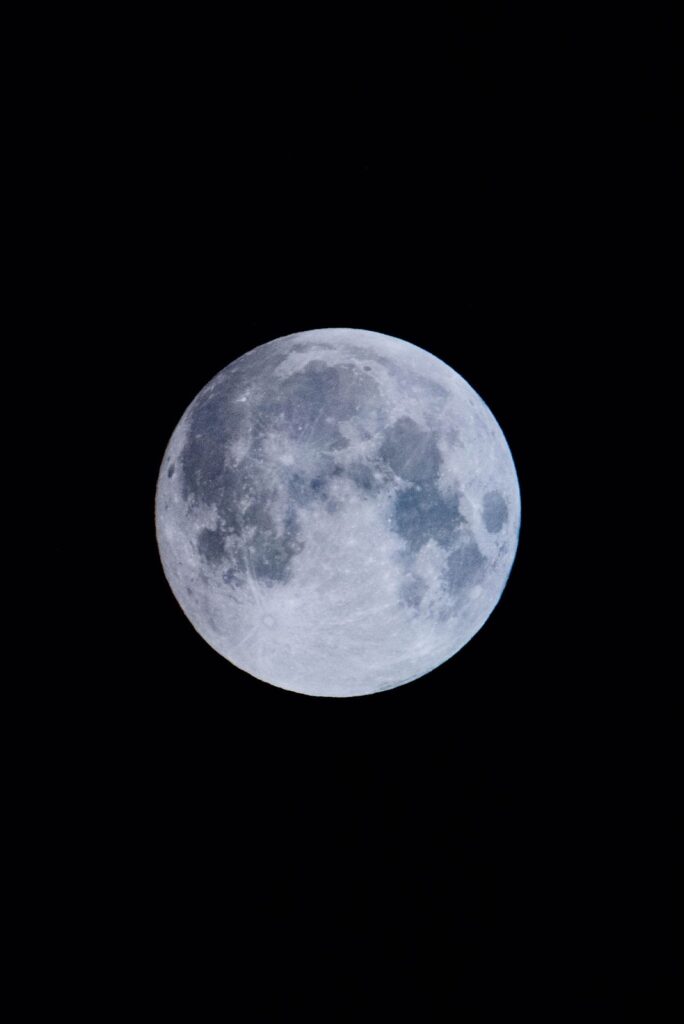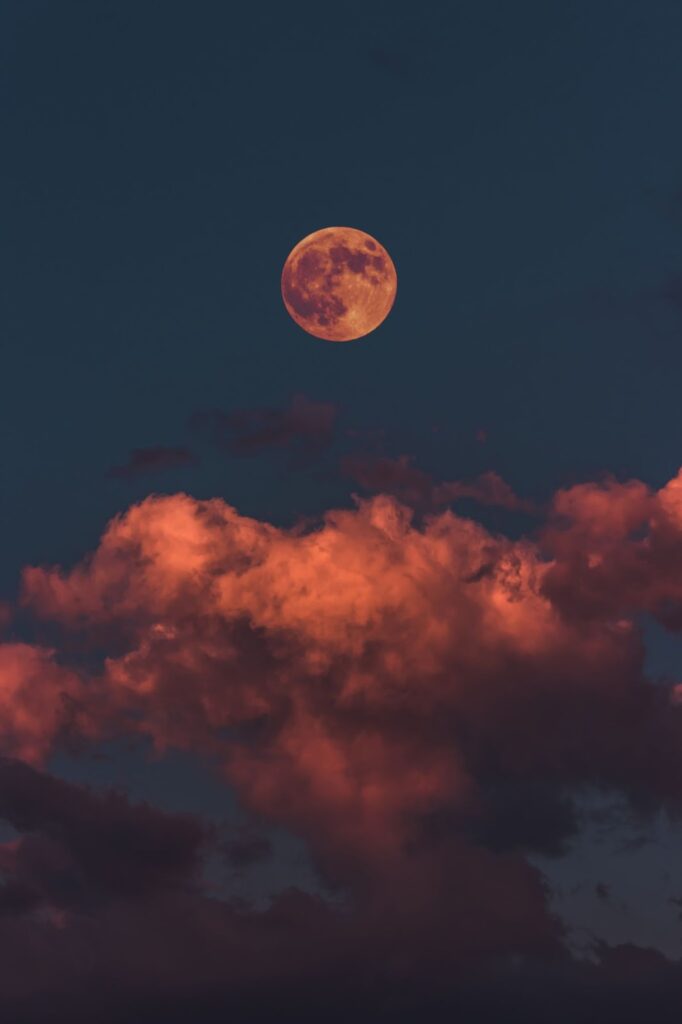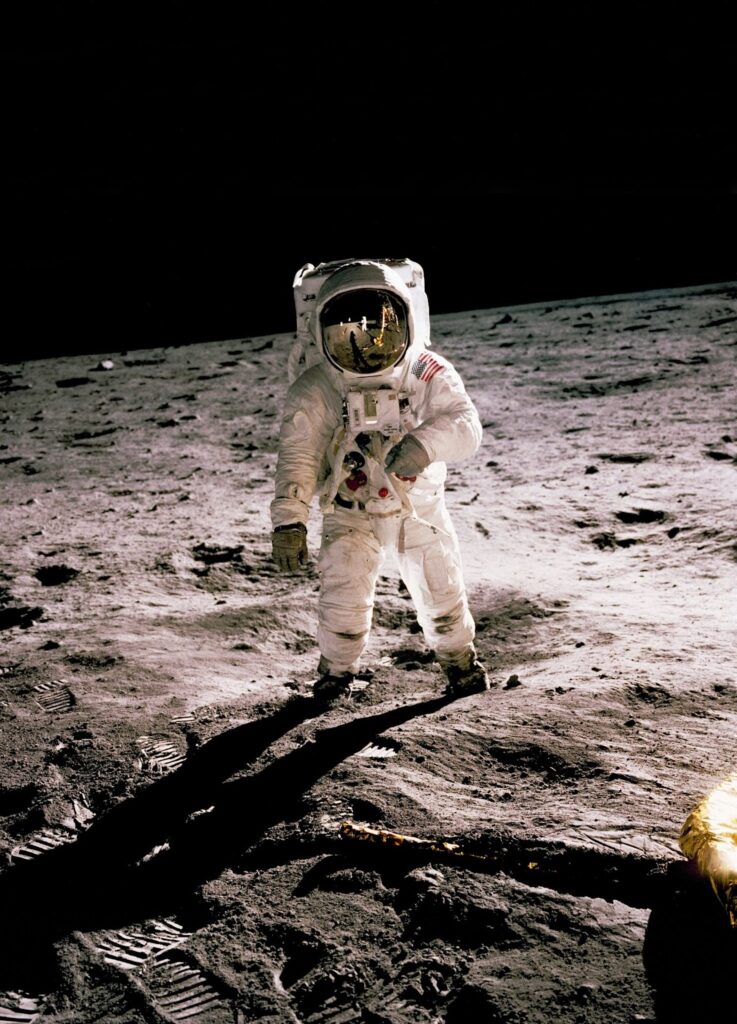The constant presence of Earth’s Moon has captivated humans throughout our relatively short tenure on this planet. There are still mysteries that plague us about this tantalizingly close ball of rock. One common question we hear a lot is “what color is the Moon?”

In this article we are going to take a much closer look at the Moon to find out some interesting facts and figures. We will also look at what color the Moon actually is.
What Is the Moon?
The rather unimaginatively named Moon is planet earth’s only natural satellite. A fraction of the size of our planet it is the fifth largest natural satellite in our solar system making it the largest in comparison to its parent planet.
It is considered a planetary-mass object that has a differentiated rocky body which technically makes it a satellite planet. However the Moon lacks any significant atmosphere, hydrosphere or magnetic field. It does however exert its own surface gravity that is roughly one-sixth that of Earth’s. As a moon its gravity is second only to Jupiter’s moon Io.
What Is the Moon’s Orbit?
The Moon’s orbit is not completely circular so its orbit around the earth is at an average distance of 384,400 km. This is roughly 30 times the earth’s diameter. This orbit and the Moon’s gravitational forces are the main influencer of the Earth’s tidal activity and the slow lengthening of the planet’s days.
It takes the Moon around 27.3 days to complete a full rotation around the earth. During this time the amount of the satellite’s earth facing surface which is illuminated by the sun varies from zero to almost 100%.
Historically when the Moon was new it was in a much closer orbit to Earth. It would have appeared much larger in the sky during this time. As time has passed the Moon’s orbit has expanded further outward increasing the length of the orbit at the same time.
When Was the Moon Formed?
A widely accepted theory for the Moon’s formation suggests that it formed around 4.51 billion years ago shortly after Earth itself was drawn together. It is thought a huge Mars sized object struck the newly formed planet Earth ejecting debris into orbit around the planet.

The Debris from this proposed impact of Earth was held in orbit around the planet eventually forming into the Moon we know today. Pulled together by gravity this same gravity exists today holding the moon together and affecting the Earth as well.
Isotope Dating
Having visited the Moon’s surface we have been able to take samples which were tested using isotope dating. The result of these tests indicate that the Moon formed around 50 million years after the proposed origins of the Solar System itself.
Alternate Moon Origin Theories
Fission
One theory has been posited in the past whereby the Moon was created through fission from Earth’s crust. This would have been caused by centrifugal force throwing matter into orbit. It is however unlikely as it would require a very high rate of initial rotation by the planet Earth.
Capture of a Passing Moon
Some have theorized in the past that the Moon did not originate from Earth but was from further away. The theory suggests that the Moon was captured into orbit around Earth as it was passing close by. This again has been debunked because it would require an unfeasibly extended atmosphere of Earth to not only dissipate the energy of a passing moon but to capture it in a new orbit.
Co-Formation
There have been theories that the Earth and the Moon developed together at the same time as part of the same primordial accretion disc. This however seems unlikely due to low levels of metal on the Moon. Had they formed together the Moon would have comparable levels of metals within its surface.
What Size Is the Moon?
As mentioned Earth’s Moon is the fifth largest in our solar system but just how big is it? The Moon has a diameter of roughly 3,500 kilometers which is more than a quarter of Earth’s. When we look at the surface of a full Moon its width is comparable to that of the country of Australia.
The Moon’s surface area is roughly 38 million square kilometers and its weight is estimated to be 1/81 of Earth’s. This density is why the Moon has the second highest gravity of all the moons in our solar system.
Exploration of the Moon
At present the Moon is the only other place beyond earth that humans have set foot. Some 24 humans have traversed the 249,000 kilometers between Earth and the Moon with 12 of them actually setting foot on the surface. There have also been more than 100 robotic visitors to the Moon.
Post War Advancements
Technologies created during World War II led to the first launch systems. These systems reached capabilities that allowed both the Soviet Union and the United States to launch spacecraft into space. This would lead to both the Cold War and the so-called Space Race.

In 1959 the first humanmade object Luna 1 escaped Earth’s gravity and passed close to the Moon. This would lead to a decade of advancements and a race to land humans on the Moon’s surface. In 1969 the US through the Apollo 11 mission landed men on the Moon. Neil Armstrong was first to set foot on the lunar surface.
The humans to date who have walked on the moon are:
- Neil Armstrong (1930-2012)–Apollo 11
- Edwin “Buzz” Aldrin (1930-)–Apollo 11
- Charles “Pete” Conrad (1930-1999)–Apollo 12
- Alan Bean (1932-2018)–Apollo 12
- Alan B. Shepard Jr. (1923-1998)–Apollo 14
- Edgar D. Mitchell (1930-2016)–Apollo 14
- David R. Scott (1932-)–Apollo 15
- James B. Irwin (1930-1991)–Apollo 15
- John W. Young (1930-2018)–Apollo 10 (orbital), Apollo 16 (landing)
- Charles M. Duke (1935-)–Apollo 16
- Eugene Cernan (1934-2017)–Apollo 10 (orbital), Apollo 17 (landing)
- Harrison H. Schmitt (1935-)–Apollo 17
Perceived Colors of the Moon
There are phrases relating to our Moon such as “Once in a blue Moon ” or “Blood Moon.” This is because at various times throughout a year the moon can appear to be starkly different colors. When standing on Earth looking up, the Moon we see is viewed through the planet’s atmosphere. As a result it can appear in a wide array of colors.
When low in the sky the Moon for example appears red or yellow. This is because blue light has been scattered away due to the long path taken through Earth’s atmosphere. The rare blue Moon appearance occurs when there is a lot of dust in Earth’s atmosphere.

In our night sky the Moon has been viewed in many varied hues ranging from completely black due to no light reflection from the sun to a purple hue which has yet to be explained even by NASA themselves. All of these colors however are affected by our atmosphere and do not actually reflect the Moon’s true color.
What Color Is the Moon?
There is a very select group of people who have seen the Moon’s true color albeit through the windows in spaceships, space stations and helmet visors. There are images taken from above Earth’s surface of the Moon of course but photos can never really do justice.
The real coloration of the Moon as seen from outside our atmosphere is probably best described as an off-white brown gray when illuminated by the sun. Moon rocks that have been brought to Earth also support the assessment of a gray hue to the Moon itself.
Final Thoughts
From Earth we see some amazing coloration of the Moon’s surface due to the effects of our own atmosphere tainting the light reflected off its surface. In truth however the actual color of the Moon is a brownish off-white gray.
